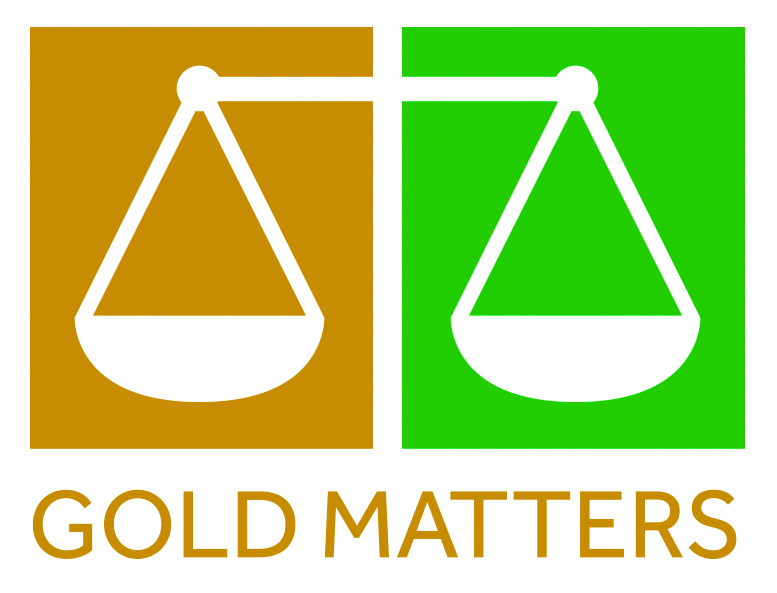Eleanor Fisher, lead researcher for the “Gold Matters” project, reflects on change to trans-disciplinary team working through the pandemic, underlining how we need all our energy, trans-disciplinary skills, and imaginations to capture opportunities for sustainable transformation.
Our three year, “Gold Matters” project examines the potential for transformations to sustainability in Artisanal and Small-scale Gold Mining (ASGM). The project is trans-regional, with field sites in parts of South America and Sub-Saharan Africa, and trans-disciplinary, building collaboration between researchers and mining actors. To foster trans-disciplinarity, the Team includes the painter Christophe Sawadogo and the photographer Nii Obodai; it also benefits from the contribution of Margaret Tuhumwire, Director of Environmental Women in Action for Development (EWAD), which supports small-scale miners in Uganda.
Being two thirds through our project and with our plans disrupted by the Covid-19 pandemic, early 2021 prompts me to reflect on how our transdisciplinary team working has changed and what we can hope to achieve in the coming months. As a 19-strong team living and working across three continents, we took travel, holding face-to-face meetings and immersive ethnographic fieldwork for granted until the pandemic hit. We have had to respond to the situation in creative ways.
Sitting here at my desk in Uppsala, Sweden, I remember the project’s start in October 2018. At the time, we held a meeting and public launch at the Institute of Cultural Anthropology and Development Sociology at Leiden University in the Netherlands. We each brought an object to symbolize new beginnings – a pen, notebook, gold weighing scales, painting, scan of a baby to be born, etc. The objects prompted comments and laughter, and for me they gave incidental insights into my fellow team members. Together we made enthusiastic plans for the research ahead.
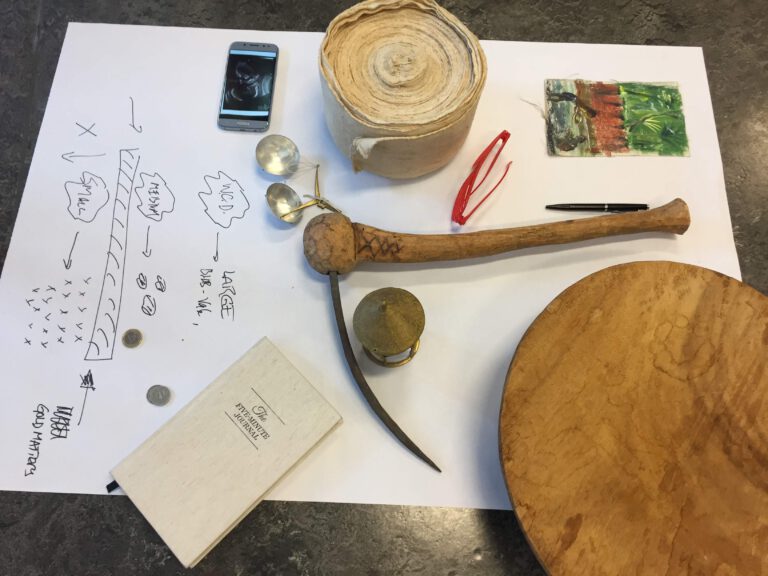
At the public launch, we displayed a painting by Christopher Sawadogo. Commissioned specially, it portrays the ethereal figure of a woman holding a gold balance, with water, fire, earth and vegetation symbolizing the weighing up of sustainability issues in gold mining. During the meeting, Nii Obodai also demonstrated his own special take on slow photography – no digital camera here!
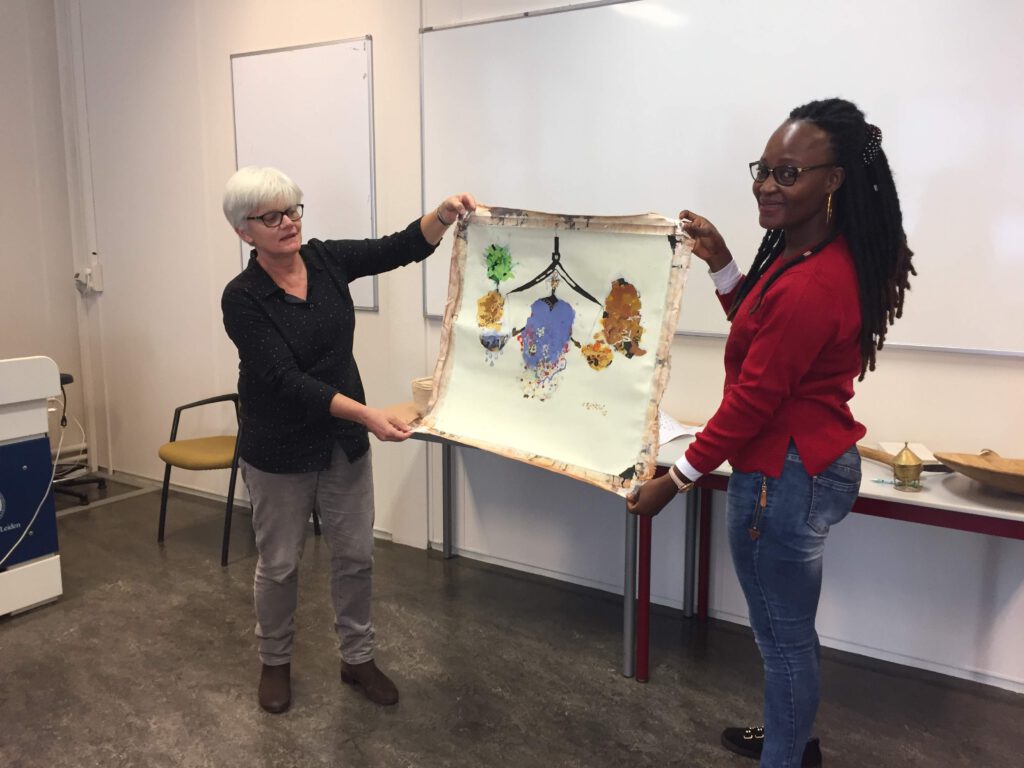
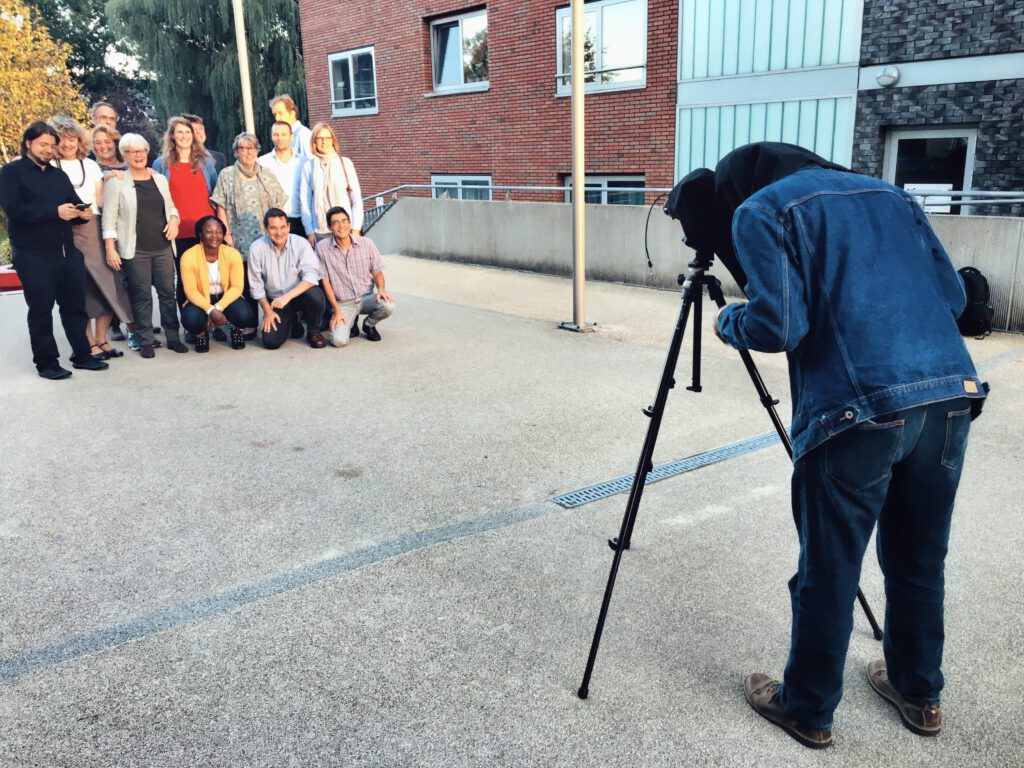
Soon after the launch, I travelled with Sabine Luning and PhD student, Esther van de Camp, to Uganda, where Margaret Tuhumwire of EWAD took us to visit miner groups in Busia District (south east). Later we rendezvoused with team member Ronald Twongyirwe of Mbarara University of Science and Technology to see mining in Buhweju District (south west). Esther later wrote about the “deep diversity” we had witnessed (see here): in southern Uganda alone, mining practices range from simple gold panning to hard-rock mining, and from processing using mercury or cyanide to non-chemical extraction of “ecological” gold. Such diversity contributes to the enormous challenge of addressing sustainability within the ASGM sector, but undaunted Esther later returned to undertake fieldwork for her PhD “Transformation and Sustainability in ASGM in Busia (Uganda)”.
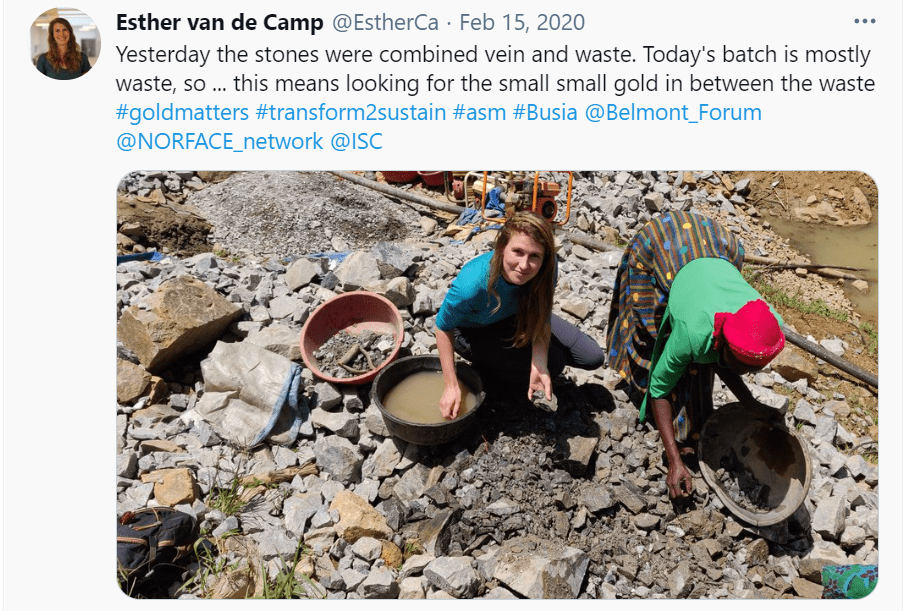
The heterogeneity observed in Ugandan points to the value of comparison between localities – across countries and continents. To develop the comparative dimension, Sabine Luning and Marjo de Theije led pilot fieldwork in Northern Ghana (see here), accompanied by Alizéta Ouedraogo, a PhD student working in Burkina Faso. The expertise Marjo and Sabine have on ASGM in South America and West Africa respectively, means they were well placed to compare mining practices in Ghana with other contexts. To do this they used a socio-technical survey (previously implemented in the Amazon), combined with photos from Brazil as a discussion point with Ghanaian miners, and interviews with cross-border migrant miners from Burkina Faso.
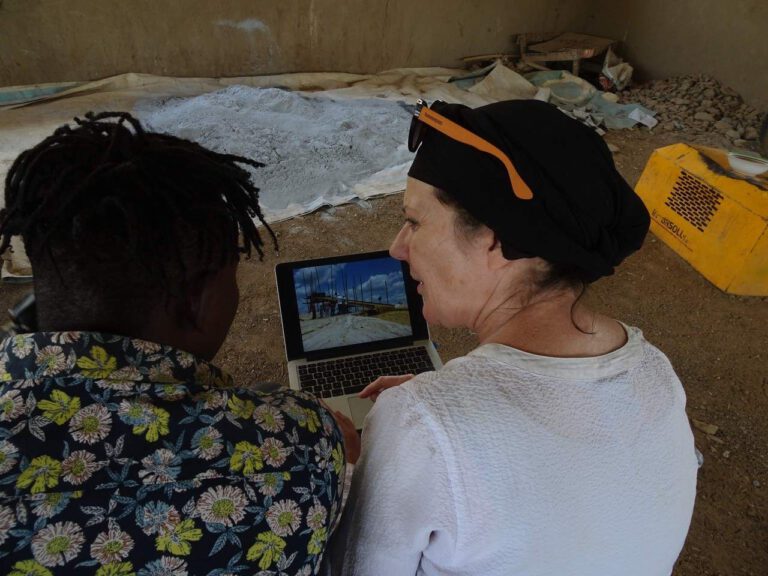
Further west, in eastern Guinea Conakry, team members Cristiano Lanzano, Luigi Arnaldi di Balme and their colleagues, Nfaly Diama and Moussa Koné, also undertook fieldwork to advance comparative analysis of technological and social change (see here and Lanzano 2020). The development of empirically rich insight into and between mining contexts helps us to build locally situated portraits of sustainability, and to reflect on scope for potential transformation. Work led by artists contributes to this, challenging taken-for-granted ways of framing the (un)sustainability of small-scale mining.

Our blogs give insights into our research (for our academic publications see here). They include “In the Midst of #Galamstop”, where Robert Pijpers reflects on conducting fieldwork during a government campaign against illegal miners in Ghana. While Jorge Calvimontes, Raissa Resende de Moraes and Carlos Henrique Xavier Araujo, highlight their first field trip together in the Brazilian Amazon “Garimpeiros and Gold Along Highway BR-163”. Raissa later described the complex relationship that exists between indigenous people and gold miners in Tapajós: “Are Sustainable Futures Possible: Indigenous People and Gold Mining in the Brazilian Amazon”.
To reflect on our field experiences and approach to ASGM, we held a project workshop in Takoradi, Ghana. Over an intensive 4 days, we advanced our conceptual and methodological ideas, including our plans for engagement between researchers, artists, and miners. Christophe Sawadogo led a drawing exercise (see here) encouraging us to join in (see here). He later declared: “to see you smiling while taking five minutes to train your fingers in drawing, long life to Gold Matters!” Watching the clip of us painting together, laughing and joking in close proximity, now seems poignant, given the challenges of social isolation and team working during the Covid pandemic.
While in Ghana, we travelled to Tarkwa, a mining town. At one location, we watched women carrying heavy tailings (left over materials) on their heads. Christophe later collected mine dust of different hues – orange, yellow, red, brown – and used tires tracks and other serendipitous markings to create an image of a woman with a headload. Painting people living, working and surviving at society’s margins, Christophe tries to make “the invisible” imagined.
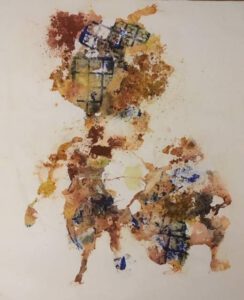
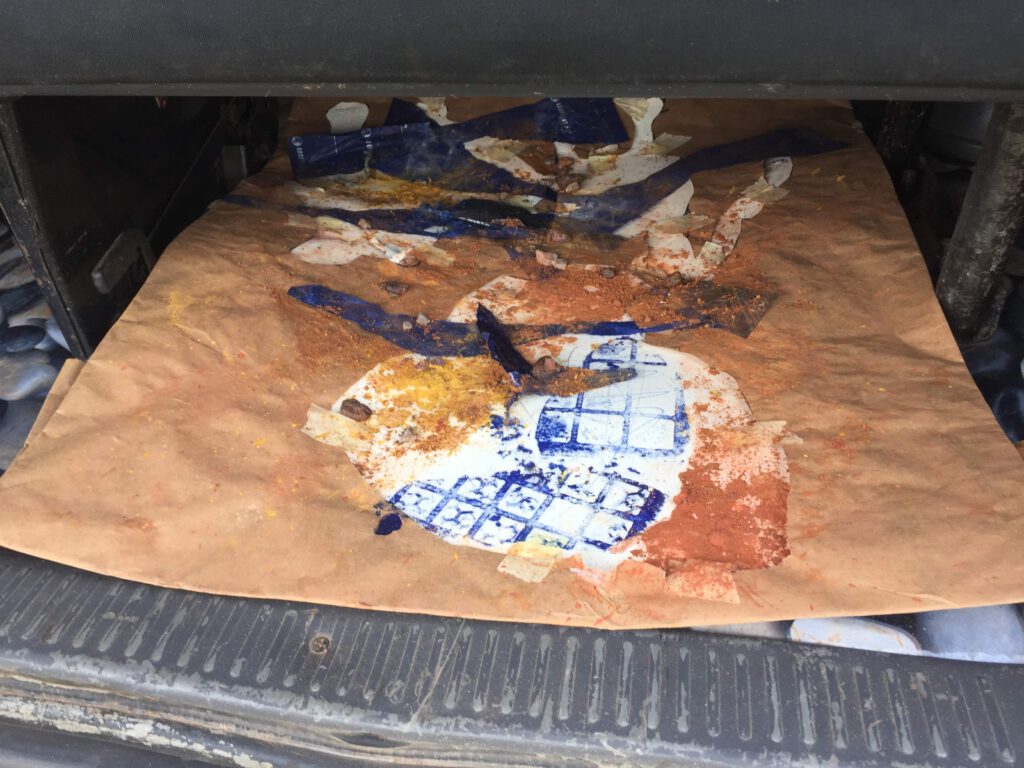
Many of us later came together for the Global Earth Matter’s workshop in the Netherlands: “Visions of Planetary and Political Precarity”, hosted by Wayne Modest, Director of the Centre for Material Culture, and Sabine Luning, Associate Professor at the Institute of Cultural Anthropology and Development Sociology in Leiden, the Netherlands. The workshop sought to place notions of planetary precarity within extractive histories of the colonial destruction of societies and natures. For the Gold Matters team, it provided an excellent opportunity for discussion with artists and museum curators, to help advance our plans for artistic collaboration.
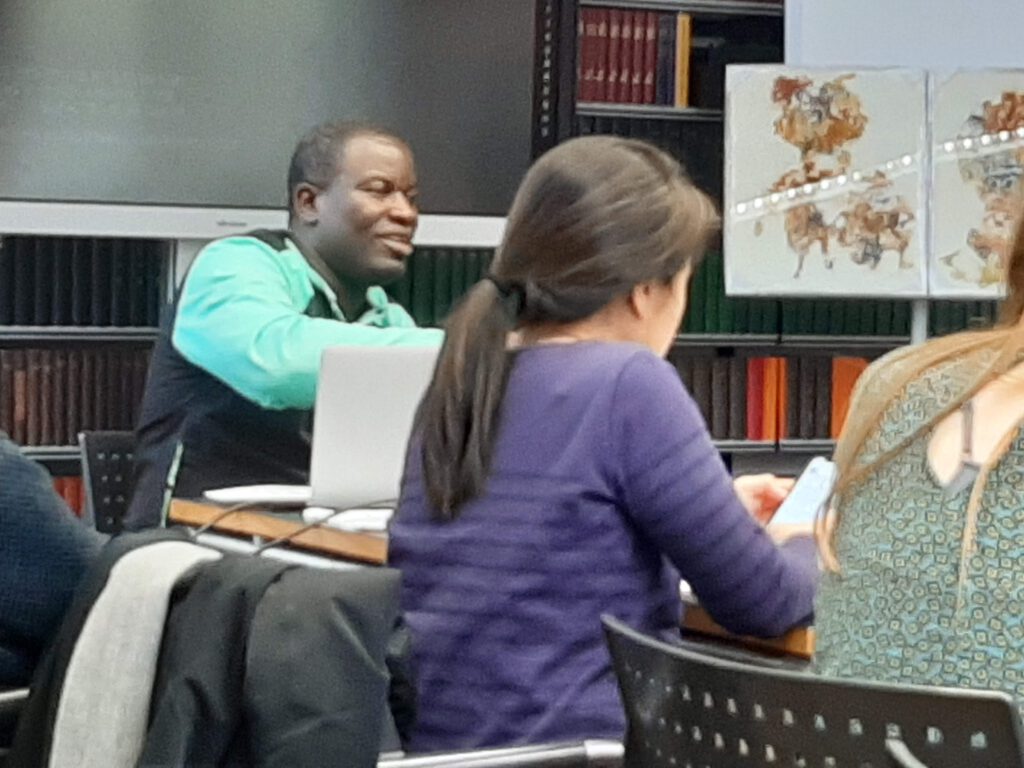
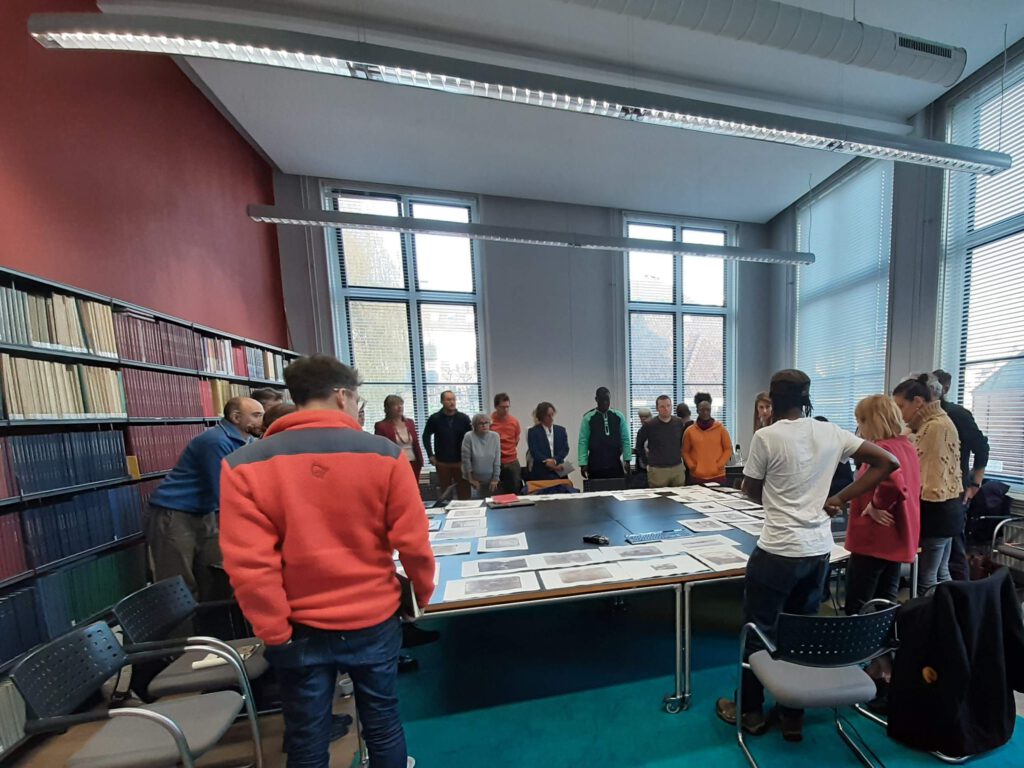
2020 marked the start of our schedule for art workshops with miners, and the creation of a travelling ‘pop-up’ exhibition that would move from West Africa to East Africa, Brazil and the Netherlands. The notion of mobility was integral to the exhibition, with its capacity to ‘pop-up’ helping generate “sustainability conversations” in local contexts. In January 2020, we held a workshop in Kejetia, Northern Ghana. Miners from southern Ghana travelled with the Team, helping stimulate comparison of different spatial arrangements and sources for sustainability in mining. Christophe Sawadogo created a public artwork with local women to commemorate miners who had died in a mine accident, while Nii organized a ‘pop up’ exhibition. The workshop both bridged and revealed the inequalities inherent in research (see here with a video clip of the celebration here).
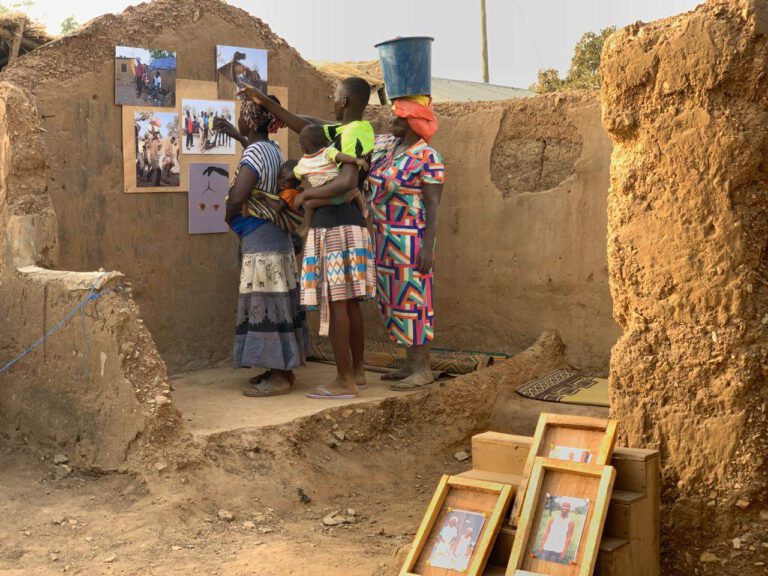
We prepared for further art collaboration in Uganda in March 2020 but rapidly this became impossible with the unfolding of the Covid-19 pandemic. The idea of a travelling exhibition, that would ‘pop-up’ and draw a crowd, became incongruous when faced with the pandemic-induced difficulties of mobility and the need for social isolation.
Later in the year, acknowledging the impossibility of meeting face-to-face, we held our mid-project workshop over Zoom. Likewise, soon after, Lucia da Costa Ferreira convened a workshop at NEPAM, UNICAMP Mineração Artesanal e de Pequena Escala: Transformações em direção à sustentabilidade. These workshops provided important opportunities to share ideas on what sustainability means for us and for our interlocutors, helping to build comparative understanding of the situated character of sustainability issues and of transformative change.
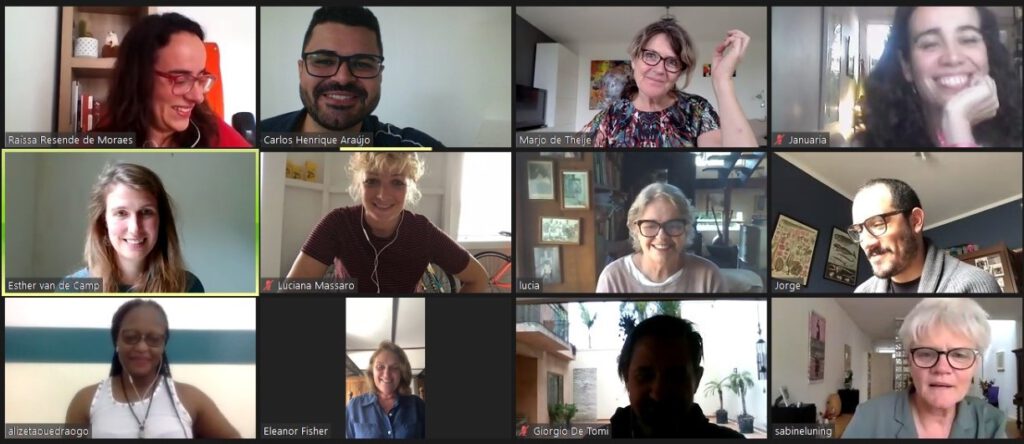
Virtual meetings are now our team norm, providing an efficient means to hold constructive discussions. They also open up possibilities for capacity building, such as quarterly meetings with our five project PhD students on different continents. Nevertheless, I greatly miss face-to-face meetings with the opportunity to share ideas, talk, eat, drink, take selfies, and even argue. For me as research team leader, such social interactions are not a luxury to be easily dispensed with; they are incredibly important for bridging professional hierarchies, assumptions, and cultural differences – all vital for transdisciplinary working.
Beyond our team working, our work has inevitably turned to address the Covid-19 pandemic in mining communities. WhatsApp contact with miners at our field sites helped us to identify early impacts of the pandemic (see here and here). This led to the article Small-scale gold mining and the Covid-19 pandemic: conflict and cooperation in the Brazilian Amazon and another on Ghana in Anthropology Today (forthcoming). Carlos Henrique Xavier Araujo and Giorgio de Tomi also joined an international initiative to record COVID-19 impacts on small-scale mining communities (see the Delve platform).
Writing as I am in February 2021, it feels like we have “reset” our ways of working and our expectations in order to realize a successful project. We are enthusiastically developing our exhibition, giving presentations, contributing to policy work, and writing academic publications. It is also the case that plans for further fieldwork are both on hold and strongly missed, particularly by our PhD students for whom having adequate data is critical for career progression. The ability to engage with gold miners, the cornerstone of our approach to transdisciplinarity and for creating impact from our research, is strongly challenged, although established relationships between members of the research team and miners have been invaluable for continuing dialogue and for progressing our exhibition.
Taking a small step back to reflect, my concern is that the pandemic situation of collective global suffering needs to be grasped as an opportunity to rethink the economic, political and cultural foundations of our society, including in mining communities. Otherwise, we run the risk of missing the opportunity to transform the world in a (more) sustainable way rather than letting events themselves transform us. To this end, we need all our energy, our trans-disciplinary skills, and our imaginations to heal the wounds left by the pre-covid-19 world and to try to build a new one founded on equity and social justice.
Eleanor Fisher is Head of Research at the Nordic Africa Institute
Email: Eleanor.fisher@nai.uu.se
Twitter: @EleanorFisher_
Gold Matters: Sustainability Transformations in Artisanal and Small-scale Gold Mining: A Multi-Actor and Trans-Regional Perspective is a transdisciplinary research project which aims to consider whether and how a transformative approach towards sustainability can arise in Artisanal and Small-scale Gold Mining (ASGM). For more information, see www.gold-matters.org.
Cite as follows: Fisher, E. (2021) #Reset2021 – Maintaining Transdisciplinary Teamwork through a Pandemic www.gold-matters.org/?p=
